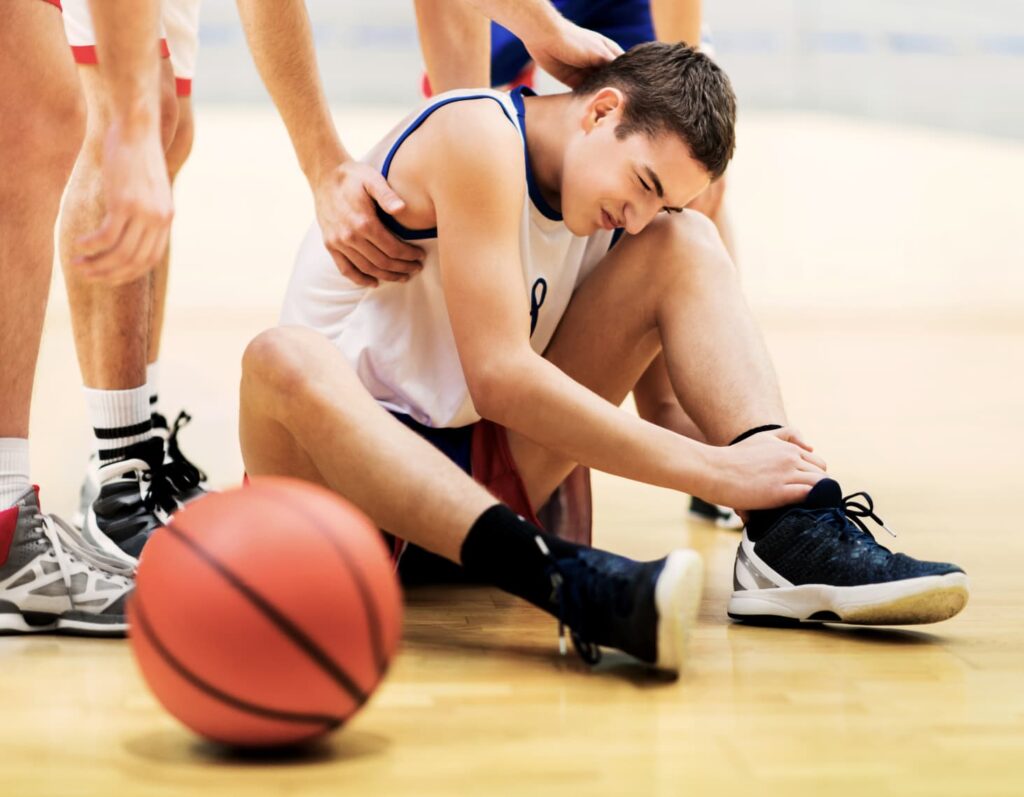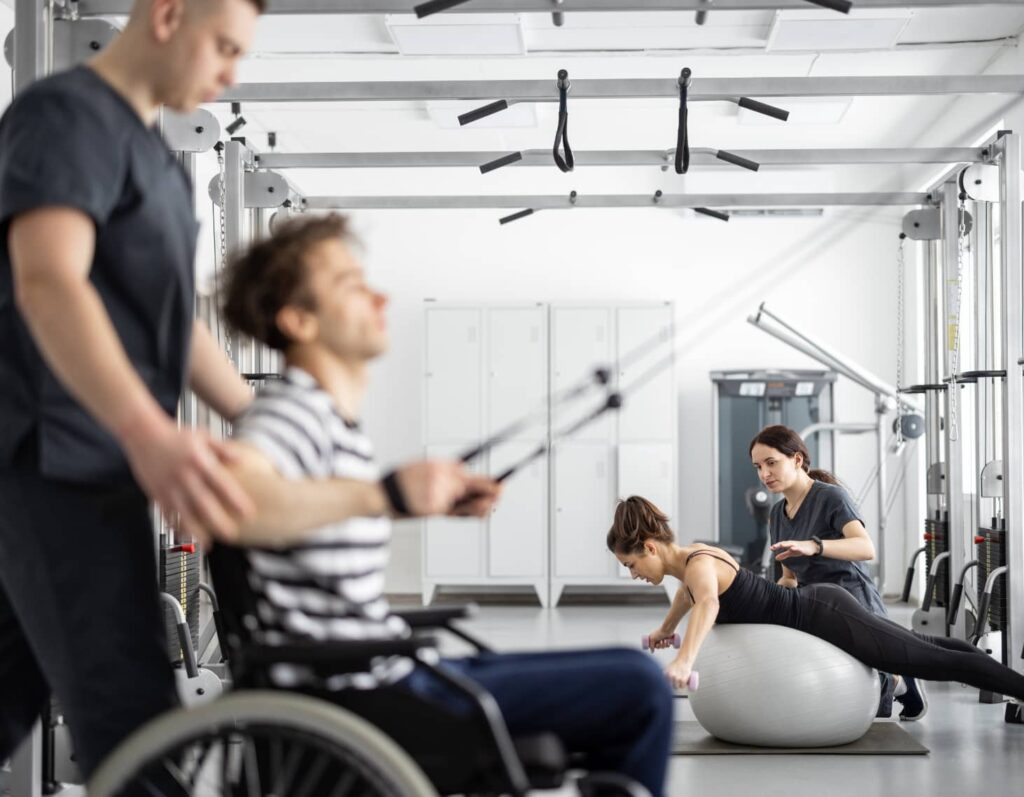Have you ever experienced the bitter disappointment of a sports injury? The kind that leaves you unable to participate in the activities you love and puts your athletic dreams on hold?
If you’re nodding your head, you understand the pain and frustration accompanying such setbacks. But fear not, for this story has a silver lining: physical therapy for sports injuries.
For sports enthusiasts like yourself, physical therapy is not just a mundane regimen of exercises and stretches. It’s a powerful ally that can help you recover from injuries and reclaim your active lifestyle.
From sprained ankles to torn ligaments, physical therapy offers many benefits beyond mere recovery. Here, we will delve into the world of physical therapy for sports injuries and explore the remarkable advantages it brings to the table.
So, let’s lace up our metaphorical sneakers and discover the ways in which physical therapy can transform your rehabilitation journey.
Understanding Sports Injuries

Sports injuries are a common occurrence among athletes, both professional and amateur. These injuries can be minor or severe, resulting in significant pain, discomfort, and disruption to an athlete’s schedule.
Understanding the causes and types of sports injuries can help athletes take steps to prevent them from happening in the first place and manage them should they occur. Here are the common types of sports injuries and their causes.
Common Sports Injuries
Sprained Ankles: This common injury occurs when the ligaments that hold the ankle joint together are stretched or torn. It can happen when an athlete steps, jumps, or runs on an uneven surface.
Strained Muscles: Strained muscles occur when the muscle fibres tear due to over-extension or overuse. The most common areas for this injury include the hamstring and calf muscles.
ACL Tears: The anterior cruciate ligament (ACL) is a crucial knee ligament that controls the forward and rotational movement of the lower leg. ACL tears happen when the knee is twisted or landed on unevenly.
Tennis Elbow: This injury is characterized by pain and tenderness on the outer part of the elbow. It occurs due to the repetitive motion of the wrist and forearm in sports such as tennis, golf, and baseball.
Concussions: A concussion is a traumatic brain injury that occurs due to a blow to the head. Athletes involved in high-impact sports such as football, boxing, and hockey are more prone to concussions.
Causes of Sports Injuries
Overuse and Repetitive Motion: Overuse injuries happen when an athlete engages in intense training or competition without sufficient rest and recovery time. Repetitive motion injuries, on the other hand, occur due to the repetitive and forceful movement of a particular muscle or joint.
Poor Training Techniques: Athletes who engage in improper training techniques or overload their muscles are more prone to injuries. Training with the proper form and technique is essential to minimize the risk of injury.
Inadequate Warm-up and Stretching: Proper warm-up and stretching prevent injuries. Without proper warm-up, the muscles and joints are more prone to injury.
Lack of Proper Equipment: An athlete must use proper equipment such as helmets, pads, and shoes to minimize the risk of injury. The equipment should be well-fitting and in good condition.
Accidents and Collisions: Accidents and collisions happen in contact sports such as football, rugby, and hockey. Proper safety measures such as protective gear and rules should be implemented to reduce the risk of injury.
The Benefits of Physical Therapy

Accurate Diagnosis and Treatment Plan
Physical therapists are highly trained healthcare professionals who specialize in musculoskeletal conditions. They can accurately assess sports injuries, identify underlying causes, and develop personalized treatment plans.
This ensures that rehabilitation targets the specific injury and promotes optimal healing.
Rehabilitation and Functional Restoration
Physical therapy focuses on restoring function and maximizing performance. Therapists use techniques such as therapeutic exercises, stretching, and strengthening exercises to rehabilitate injured tissues and restore proper movement patterns.
This helps athletes regain their pre-injury strength, flexibility, and agility, allowing them to return to their sport safely and effectively.
Injury-Specific Techniques
Physical therapists employ specialized techniques for different types of sports injuries. For example, they may use manual therapy techniques like joint mobilization or soft tissue mobilization to improve joint range of motion and reduce scar tissue formation
They may also use specific exercises and modalities to address conditions like sprains, strains, tendonitis, or ligament tears, providing targeted treatment for optimal recovery.
Sport-Specific Rehabilitation
Physical therapists understand the demands of various sports and design rehabilitation programs tailored to the athlete’s specific sport and position. They incorporate sport-specific exercises, drills, and movements to help athletes regain the necessary skills and conditioning for their sport.
This sport-specific approach ensures that athletes can confidently return to their activities and minimize the risk of re-injury.
Psychological Support and Motivation
Sports injuries can have a significant psychological impact, including frustration, fear of re-injury, and loss of confidence. Physical therapists not only provide physical rehabilitation but also offer emotional support and motivation throughout the recovery process.
They help athletes manage their psychological challenges, set realistic goals, and maintain a positive mindset, enhancing the overall recovery experience.
When to Seek Help from a Physical Therapist

Sports injuries can affect any athlete, from beginners to professionals. If you have experienced an injury restricting your physical abilities and interfering with your performance, consider considering seeing a physical therapist.
Physical therapists are skilled in assessing the root cause of injuries and offering targeted therapies to help speed up recovery. Their expertise can help get you back to your peak physical performance in the shortest amount of time possible and assist you in sports injury prevention.
Strengthening Exercises for Injury Prevention

Here are several injury prevention exercises to help you stay active in sports while reducing the risk of injuries.
Muscular Imbalances: Strengthening exercises address muscular imbalances that can lead to injuries. Imbalances occur when specific muscles are stronger or weaker than their opposing muscles, causing improper joint mechanics and increased injury risk.
Core Strengthening: A strong core is vital for overall body stability and injury prevention. Core exercises, such as planks, bridges, and rotational movements, engage the muscles around the abdomen, lower back, and pelvis.
Balance and Proprioception: Balance injury prevention exercises, like single-leg stands, stability ball exercises, or balance board exercises, improve neuromuscular control and enhance joint stability, reducing the likelihood of ankle sprains, knee injuries, and falls.
Progressive Overload: Progressive overload involves gradually increasing exercise intensity, duration, or complexity to ensure ongoing strength gains and injury prevention.
You can also refer to the prevention of sports injuries ppt to gain further insights and guidance.
The Role of Physical Therapy in Sports Injury Rehabilitation
Physical therapy is crucial in rehabilitating sports injuries, helping athletes recover from injuries and regain their strength and mobility.
Sports injuries can range from minor sprains to significant muscle tears or fractures, and each requires careful attention and specific treatment.
Physical therapists work with athletes to develop personalized rehabilitation plans, incorporating exercises, stretches, and other techniques to help improve their range of motion and build strength.
By combining hands-on therapy, exercises, and education, physical therapists can help athletes recover from injuries and prevent them in the future.
With their movement and musculoskeletal function expertise, physical therapists are a valuable asset to any sports team or athlete looking to recover from an injury.
Conclusion
So, physical therapy is a vital component in treating and rehabilitating sports injuries. Physical therapy plays a crucial role in the recovery process, from pain relief and improved healing to restored mobility and personalized injury prevention strategies.
We hope this information has provided a better understanding of the importance of physical therapy in promoting optimal recovery, reducing re-injury risks, and enabling a safe return to sports activities.

